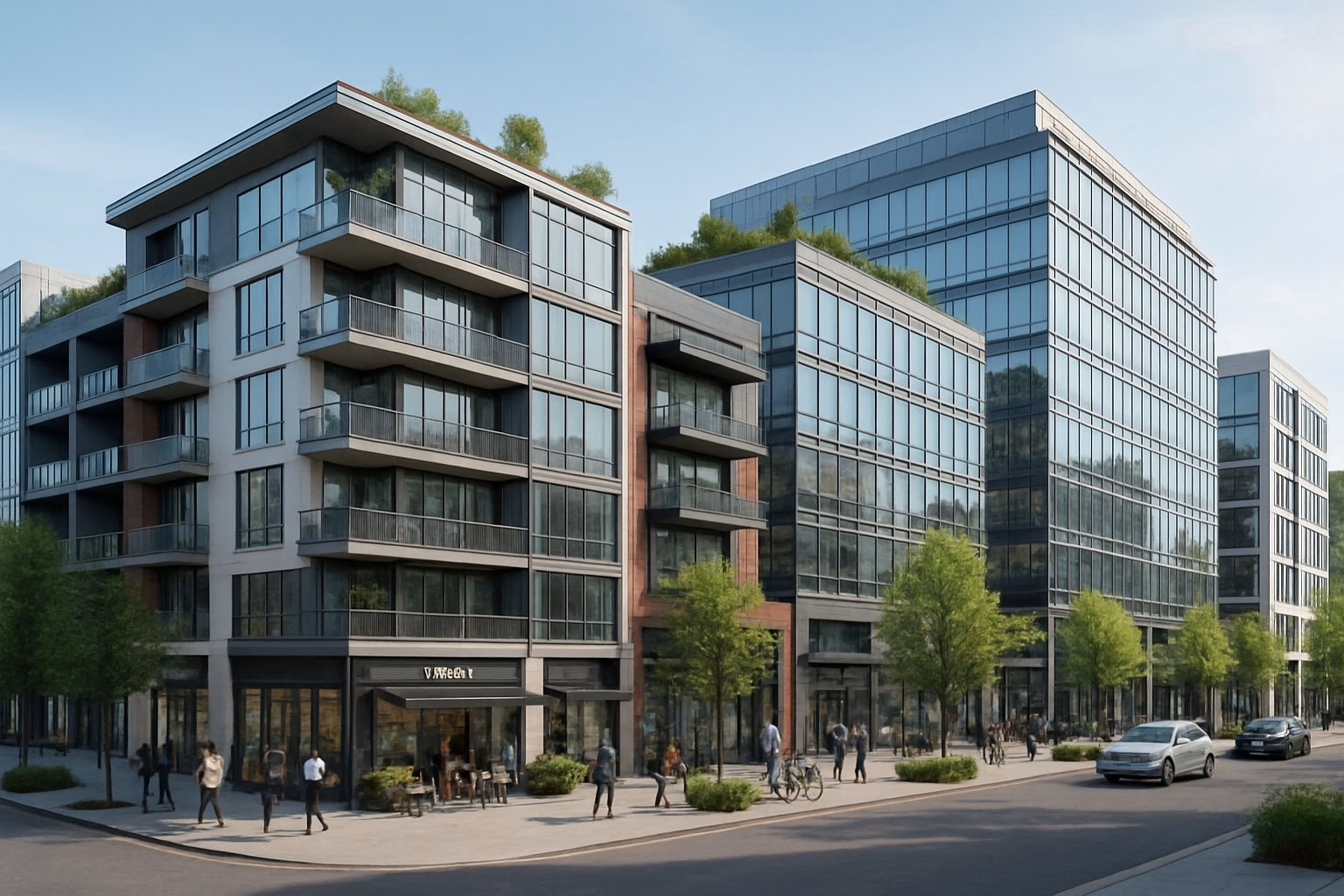Foreclosure properties present unique challenges in the real estate market, but proper staging can transform these distressed assets into attractive homes that sell quickly and command better prices. Staging a foreclosure property involves strategically furnishing and decorating an empty or poorly maintained space to help potential buyers visualize themselves living there, which can reduce time on market and increase final sale prices by creating emotional connections with viewers. Unlike traditional home staging, foreclosure staging often requires addressing deferred maintenance issues and overcoming negative perceptions associated with bank-owned properties.
Empty foreclosure properties can feel cold and uninviting, making it difficult for buyers to gauge room sizes or imagine how spaces function. Professional staging addresses these concerns by highlighting architectural features, defining room purposes, and creating welcoming environments that stand out in competitive markets.
Whether you work with professional home staging services or implement DIY strategies, understanding the fundamentals of foreclosure staging helps maximize a property’s appeal. The process requires balancing budget constraints with the need to present a polished product that attracts serious buyers and generates competitive offers.
Key Takeaways
- Staging foreclosure properties helps buyers visualize the home’s potential and leads to faster sales at higher prices
- Professional staging services provide expertise in transforming distressed properties into market-ready homes
- Strategic furnishing and design choices overcome negative perceptions associated with bank-owned foreclosures
Key Strategies for Effective Foreclosure Property Staging
Foreclosure properties require specific staging approaches that address deferred maintenance, dated aesthetics, and the emotional disconnect buyers often feel with bank-owned homes. Strategic staging transforms these properties into marketable assets that attract homebuyers and justify competitive pricing.
Understanding the Importance of Staging Foreclosure Homes
Foreclosure properties typically sit vacant for extended periods, accumulating dust, odors, and a sense of neglect that immediately signals distress to potential buyers. Staging creates psychological distance from the property’s foreclosure status and helps buyers envision the property as their future residence rather than a distressed asset.
When you stage a foreclosure, you compete against move-in-ready properties that don’t carry the stigma of bank ownership. Home staging addresses this disadvantage by demonstrating the property’s potential and functionality. Research shows that staged homes sell faster and often command higher prices than unstaged comparables.
Preparing and Cleaning the Property
Start with a deep cleaning of every surface, as foreclosed properties often accumulate significant dirt and grime during vacancy. Pay special attention to kitchens and bathrooms where cleanliness directly impacts buyer perception of the property’s condition and maintenance history.
Eliminate odors from pets, smoke, or mildew by cleaning carpets, repainting walls with odor-blocking primer, and replacing HVAC filters. Repair obvious defects like broken fixtures, missing outlet covers, and damaged flooring that signal neglect to prospective buyers.
Replace burnt-out light bulbs and ensure all switches function properly. Clean windows inside and out to maximize natural light, which makes spaces feel larger and more inviting during showings.
Enhancing Curb Appeal for First Impressions
The exterior presentation determines whether buyers will enter your foreclosure property or move on to the next listing. Mow the lawn, trim overgrown shrubs, and remove all debris from the yard to create an immediate impression of care and maintenance.
Consider these essential curb appeal improvements:
- Fresh mulch in garden beds for a manicured appearance
- Pressure washing driveways, walkways, and siding
- Front door refresh with new paint or hardware
- House number replacement with modern, visible numbers
- Lighting updates for entryway fixtures
Add inexpensive potted plants or flowers near the entrance to introduce color and life to the property. Ensure the mailbox is clean and functional, as small details contribute to the overall impression of a well-maintained home.
Staging Key Areas: Living Room, Kitchen, and Bedrooms
Prioritize staging the rooms that matter most during buyer walkthroughs. Arrange living room furniture to define the space’s purpose and demonstrate traffic flow without overcrowding. Use neutral-toned furniture to appeal to a broad range of homebuyers.
In the kitchen, remove all personal items from countertops except for a few tasteful accessories like a bowl of fresh fruit or a small plant. Ensure cabinet doors close properly and hardware is polished or replaced if tarnished. A simple table setting or coffee station suggests the room’s functionality.
For bedrooms, position the bed as the focal point with clean bedding in neutral colors. Add side tables with simple lamps to create symmetry and demonstrate the room’s capacity. Keep closets open during showings to showcase storage space, which ranks high on buyer priority lists.
Remove personal photographs, religious items, or anything that prevents buyers from imagining themselves in the space. The goal is to create environments that feel purposeful without feeling occupied, allowing buyers to project their own lives into the foreclosure property.
Professional Staging Options and Maximizing Appeal
Foreclosure properties require strategic presentation decisions that balance budget constraints with the need to attract buyers. The staging approach you choose—whether professional services, digital solutions, or realtor-guided efforts—directly impacts how quickly your property sells and at what price.
Hiring a Professional Home Stager vs. DIY Approaches
Professional home stagers bring expertise in buyer psychology and market trends that can transform how buyers perceive a foreclosure property. They know how to minimize visible damage while highlighting usable space and architectural features. A professional stager typically provides furniture, decor, and layout plans that appeal to your target demographic.
DIY staging can work for foreclosure properties with minimal damage if you have design skills and access to furniture. Focus on deep cleaning, removing any remaining personal items, and arranging furniture to showcase room functionality. Most foreclosures sit vacant, requiring you to source and transport furnishings yourself.
Cost considerations:
- Professional staging averages $1,500-$3,500 for initial consultation and monthly rental
- DIY approaches cost $200-$800 for cleaning supplies, minor repairs, and decor items
- Staged homes can increase selling prices by 1-5%, often offsetting staging expenses
Your timeline also influences this decision. If you need to sell quickly, professional stagers work faster and deliver more polished results than DIY efforts.
Virtual Staging Solutions for Vacant or Damaged Properties
Virtual staging uses digital technology to add furniture and decor to photographs of empty or damaged rooms. This option costs significantly less than physical staging, typically ranging from $25-$150 per room. You provide quality photos of vacant spaces, and designers digitally insert furnishings that help buyers visualize the property’s potential.
This approach works well for foreclosure properties with cosmetic issues that would be expensive to address physically. Virtual staging allows you to show rooms as they could look after updates, helping buyers see past current conditions. Online listings benefit most from this technique since buyers browse photos before scheduling visits.
Important limitations:
- Buyers may feel misled if in-person appearance differs drastically from photos
- You must clearly disclose that images are virtually staged
- Physical showings still present the property in its actual vacant or damaged state
Virtual staging serves as a marketing tool to generate interest and showings, but it doesn’t replace the impact of physically walking through a well-presented space.
Role of Realtors in Foreclosure Property Staging
Experienced realtors determine the most effective staging strategy for foreclosure properties by analyzing comparable sales and identifying buyer expectations at specific price points. They recommend staging companies that specialize in preparing homes for sale and coordinate logistics such as scheduling, furniture selection, and property photography to enhance listing appeal.
Realtors leverage relationships with stagers who offer discounted rates or flexible payment terms tailored to foreclosure situations. They focus staging efforts on high-impact areas—living rooms, kitchens, and master bedrooms—to maximize buyer interest and perceived value.
Some realtors structure their commissions to include basic staging services or advance staging costs, with repayment at closing. This approach allows investors and property owners to stage properties without upfront cash outlays, addressing common challenges in foreclosure transactions.
Wondering Where the Savviest Investors Find Their Best Deals?
Access the largest database of foreclosure properties nationwide and discover below-market deals before other investors. Start your search today!

Are you a contrarian investor with the foresight to spot opportunities where others see only chaos?
Rental Property Management in a Market Crash is your essential guide to navigating turbulent economic waters. Learn how to capitalize on market downturns that inevitably occur, drawing parallels between the Global Financial Crisis of 2007-09 and current market conditions.
This book offers invaluable insights into the dynamics of the housing market during a downturn, equipping you with the knowledge to make informed decisions and build a resilient investment portfolio.
Don’t just weather the storm – learn to thrive in it. Get your copy now from your favorite bookseller:
- Amazon as an ebook
- Books2Read for Apple, Barnes & Noble, Kobo, Scribed, and 8 more sellers with both eBook and paperback options available
- Payhip as a downloadable PDF
Ready to take your business to the next level?
- Subscribe to our newsletter
- Visit the learning center
- Learn more about our consulting services



